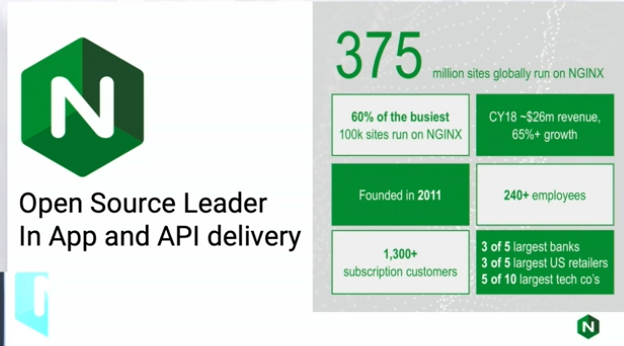NGINX Post F5 Acquisition
Cloud Field Day 5 had an awesome lineup of companies presenting the latest in tech. Among them was NGINX. Most people know NGINX as a webserver-slash-load balancer that all the cool kids are using these days. By all the cool kids, I mean the reported >40% of webservers on the public Internet. But NGINX was also in the news recently because it was acquired by F5. This acquisition has caused many to question what would happen next. F5 has a long history as a traditional enterprise appliance vendor. That dominance could come into question in a cloud-first world. How F5 would change NGINX was very much top of mind as I watched their presentation to the Field Day delegates.
NGINX Market
First, some history. The NGINX web server is opensource. NGINX Inc. has extended the proxy and load balancer into the core product. “Open Core” is the business model, which means the commercial product has features that are not in the open source release. This does not appear to change under F5’s ownership. The current listing of what’s included in the OSS version vs. the Plus release can be found at this link https://www.nginx.com/products/nginx/#compare-versions .
The word is that F5 is bringing them over “whole” and that they are interested in preserving the community, and innovation curve within the company. For now, and for the foreseeable future, it’s business as usual for NGINX. These statements are very much in line with what was said by both the CEOs of NGINX and F5 in March at the time of the acquisition as documented in this business insider article (https://www.businessinsider.com/nginix-f5-networks-670-million-acquisition-2019-3).
The NGINX GitHub page is still very much alive and contributions continue to be made. Many companies have made a sizable investment into NGINX and run key aspects of their businesses using the software. It makes sense that the Netflix’s of the world would continue to do so. There are companies like Kong which makes a service control platform built ontop of a combination of the open source versions of NGINX and PostgreSQL. None of these contributors compete with F5, so there shouldn’t be a drop off in code sharing. The only fear would be if F5 one day decided to shutter the OSS version. While I knew NGINX was popular, I hadn’t realized there were companies who used the Opensource code for NGINX to build their products. Presumably, those companies could continue on using the open source code assuming they were willing to accept that risk.
We’ll have to take F5’s word at how they expect things to go. In some ways, it makes a lot of sense from a synergy perspective - F5 gear in the DC and NGINX for cloud native apps. But it still remains to be seen how far they let NGINX go towards being able to replace all of the features of an F5 in pure software. The CEO of NGINX, said, ““we’re focused on helping customers transition from expensive hardware appliances to using software for application delivery, and then moving to microservices, which helps them build more scalable applications” in a NextWeb interview back in August of 2016. What happens when that core vision runs into F5 hardware and maintenance profits? Some companies are OK adapting and transitioning away from prior product lines. Some are not. Despite the answers given last week, time will tell which way this story goes. I’m looking forward to seeing where they are this time next year, perhaps at another Tech Field Day event.

